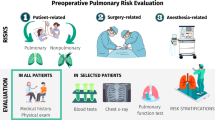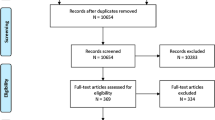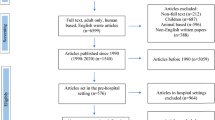Abstract
Background
Delayed extubation and transfer to the intensive care unit (ICU) in children undergoing major scoliosis surgery may increase postoperative complications, prolong hospital stay, and increase medical expenses; however, whether a child will require delayed extubation or transfer to the ICU after scoliosis orthopedic surgery is not fully understood. In this study, we reviewed the risk factors for delayed extubation and transfer to the ICU after scoliosis orthopedic surgery in children.
Method
The electronic medical records of pediatric patients (≤ 18 years) who underwent posterior spinal fusion surgery between January 2018 and November 2021 were reviewed and analyzed. Patient characteristics (age, sex, body mass index, American Society of Anesthesiologists, ASA, grade, preoperative lung function, and congenital heart disease), preoperative Cobb angle, scoliosis type, correction rate, vertebral fusion segments, pedicle screws, surgical osteotomy, intraoperative bleeding, intraoperative allogeneic transfusion, intraoperative hemoglobin changes, intraoperative mean arterial pressure changes, intraoperative tidal volume (ml/kg predicted body weight), surgical time, postoperative extubation, and transfer to the ICU were collected. The primary outcomes were delayed extubation and transfer to the ICU. Multivariate logistic regression models were used to determine the risk factors for delayed extubation and ICU transfer.
Results
A total of 246 children who satisfied the inclusion criteria were enrolled in this study, of whom 23 (9.3%) had delayed extubation and 81 (32.9%) were transferred to the ICU after surgery. High ASA grade (odds ratio [OR] 5.42; 95% confidence interval [CI] 1.49–19.78; p = 0.010), high Cobb angle (OR 1.04; 95% CI 1.02–1.07; p < 0.001), moderate to severe pulmonary dysfunction (OR 10.9; 95% CI 2.00–59.08; p = 0.006) and prolonged surgical time (OR 1.01; 95% CI 1.00–1.03; p = 0.040) were risk factors for delayed extubation. A high Cobb angle (OR 1.02; 95% CI 1.01–1.04; p = 0.004), high intraoperative bleeding volume (OR 1.06; 95% CI 1.03–1.10; p = 0.001), allogeneic transfusion (OR 3.30; 95% CI 1.24–8.83; p = 0.017) and neuromuscular scoliosis (OR 5.38; 95% CI 1.59–18.25; p = 0.007) were risk factors for transfer to the ICU. A high Cobb angle was a risk factor for both delayed extubation and ICU transfer. Age, sex, body mass index, number of vertebral fusion segments, correction rate, and intraoperative tidal volume were not associated with delayed postoperative extubation and ICU transfer.
Conclusion
The most common risk factor for delayed extubation and ICU transfer in pediatric patients who underwent posterior spinal fusion was a high Cobb angle. Determining risk factors for a poor prognosis may help optimize perioperative respiratory management strategies and planning of postoperative care for children undergoing complicated spinal surgery.
Zusammenfassung
Hintergrund
Verzögerte Extubation und Verlegung auf die Intensivstation (ICU) bei Kindern, die sich einer größeren Skolioseoperation unterziehen, können postoperative Komplikationen erhöhen, den Krankenhausaufenthalt verlängern und die medizinischen Kosten steigern. Es ist jedoch nicht vollständig verstanden, ob ein Kind nach einer orthopädischen Skolioseoperation eine verzögerte Extubation oder Verlegung auf die ICU benötigen wird. In dieser Studie haben wir die Risikofaktoren für verzögerte Extubation und Verlegung auf die ICU nach orthopädischer Skolioseoperation bei Kindern überprüft.
Verfahren
Die elektronischen Krankenakten pädiatrischer Patienten (≤ 18 Jahre), die sich zwischen Januar 2018 und November 2021 einer Spondylodese der hinteren Wirbelsäule unterzogen, wurden überprüft und analysiert. Die Patientenmerkmale (Alter, Geschlecht, Body-Mass-Index, ASA-Klassifikation der ASA [Amerikanischen Gesellschaft für Anästhesiologie], präoperative Lungenfunktion und angeborene Herzkrankheiten), präoperativer Cobb-Winkel, Skoliosetyp, Korrekturrate, fusionierte Wirbelsegmente, Pedikelschrauben, chirurgische Osteotomie, intraoperative Blutung, intraoperative allogene Transfusion, intraoperative Hämoglobinveränderungen, intraoperative mittlere arterielle Druckänderungen, intraoperatives Tidalvolumen (ml/kg prognostiziertes Körpergewicht), Operationsdauer, postoperative Extubation und Verlegung auf die Intensivstation wurden erfasst. Die primären Endpunkte waren verzögerte Extubation und Verlegung auf die Intensivstation. Multivariate logistische Regressionsmodelle wurden verwendet, um die Risikofaktoren für verzögerte Extubation und die Verlegung auf die Intensivstation zu ermitteln.
Ergebnisse
Insgesamt wurden 246 Kinder, die die Einschlusskriterien erfüllten, in diese Studie eingeschlossen, von denen 23 (9,3 %) eine verzögerte Extubation hatten und 81 (32,9 %) nach der Operation auf die Intensivstation verlegt wurden. Ein hoher ASA-Grad (Odds-Ratio [OR] 5,42; 95 % Konfidenzintervall [KI] 1,49–19,78; p = 0,010), ein hoher Cobb-Winkel (OR 1,04; 95 % KI 1,02–1,07; p < 0,001), eine moderate bis schwere Lungenfunktionsstörung (OR 10,9; 95 % KI 2,00–59,08; p = 0,006) und eine verlängerte Operationsdauer (OR 1,01; 95 % KI 1,00–1,03; p = 0,040) waren Risikofaktoren für verzögerte Extubation. Ein hoher Cobb-Winkel (OR 1,02; 95 % KI 1,01–1,04; p = 0,004), ein hohes intraoperatives Blutungsvolumen (OR 1,06; 95 % KI 1,03–1,10; p = 0,001), allogene Transfusion (OR 3,30; 95 % KI 1,24–8,83; p = 0,017) und neuromuskuläre Skoliose (OR 5,38; 95 % KI 1,59–18,25; p = 0,007) waren Risikofaktoren für die Verlegung auf die Intensivstation. Ein hoher Cobb-Winkel war ein Risikofaktor sowohl für die verzögerte Extubation als auch für die Verlegung auf die Intensivstation. Alter, Geschlecht, Body-Mass-Index, Anzahl der fusionierten Wirbelsegmente, Korrekturrate und intraoperatives Tidalvolumen standen nicht im Zusammenhang mit der verzögerten postoperativen Extubation und der Verlegung auf die Intensivstation.
Fazit
Der häufigste Risikofaktor für eine verzögerte Extubation und die Verlegung auf die Intensivstation bei pädiatrischen Patienten, die sich einer Spondylodese der hinteren Wirbelsäule unterzogen haben, war ein hoher Cobb-Winkel. Die Identifizierung von Risikofaktoren für eine ungünstige Prognose kann dazu beitragen, die perioperative Atemwegsmanagementstrategie zu optimieren und die Planung der postoperativen Versorgung von Kindern mit komplexen Wirbelsäuleneingriffen zu verbessern.


Similar content being viewed by others
Availability of data and materials
All data generated or analyzed during this study are included in this published article.
Abbreviations
- ASA:
-
American Society of Anesthesiologists
- BMI:
-
Body mass index
- FVC:
-
Forced vital capacity
- ICU:
-
Intensive care unit
- MAP:
-
Mean arterial pressure
- PBW:
-
Predicted body weight
References
Hresko MT (2013) Clinical practice.idiopathic scoliosis in adolescents. N Engl J Med 368:834–841
Weinstein SL, Dolan LA, Cheng JC, Danielsson A, Morcuende JA (2008) Adolescent idiopathic scoliosis. Lancet 371(9623):1527–1537
Zhang H, Guo C, Tang M, Liu S, Li J, Guo Q et al (2015) Prevalence of scoliosis among primary and middle school students in mainland China: a systematic review and meta-analysis. Spine 40(1):41–49
Kuznia AL, Hernandez AK, Lee LU (2020) Adolescent idiopathic scoliosis: common questions and answers. Am Fam Physician 101(1):19–23
Kathryn D, Wilson LA, Fiasconaro M, Liu J, Bekeris J, Poeran J et al (2020) Trends and outcomes in pediatric patients undergoing scoliosis repair: a population-based study. Anesth Analg 131(6):1890–1900
Przybylski R, Hedequist DJ, Nasr VG, McCann ME, Brustowicz RM, Emans JB et al (2019) Adverse perioperative events in children with complex congenital heart disease undergoing operative scoliosis repair in the contemporary era. Pediatr Cardiol 40(7):1468–1475
Bendon AA, George KA, Patel D (2016) Perioperative complications and outcomes in children with cerebral palsy undergoing scoliosis surgery. Paediatr Anaesth 26(10):970–975
Burjek NE, Rao KE, Wieser JP, Evans MA, Toaz EE, Balmert LC et al (2019) Preoperative pulmonary function test results are not associated with postoperative Intubation in children undergoing posterior spinal fusion for scoliosis: a retrospective observational study. Anesth Analg 129(1):184–191
Hod-Feins R, Abu-Kishk I, Eshel G, Barr Y, Anekstein Y, Mirovsky Y (2007) Risk factors affecting the immediate postoperative course in pediatric scoliosis surgery. Spine 32(21):2355–2360
Almenrader N, Patel D (2006) Spinal fusion surgery in children with non-idiopathic scoliosis: is there a need for routine postoperative ventilation? Br J Anaesth 97(6):851–857
Akesen S (2021) Predictive factors for postoperative intensive care unit admission in pediatric patients undergoing scoliosis correction surgery. Am J Transl Res 13(5):5386–5394
Berry JG, Glotzbecker M, Rodean J, Leahy I, Hall M, Ferrari L (2017) Comorbidities and complications of spinal fusion for scoliosis. Pediatrics 139(3):e20162574
Somani S, Di Capua J, Kim JS, Phan K, Lee NJ, Kothari P et al (2017) ASA classification as a risk stratification tool in adult spinal deformity surgery: a study of 5805 patients. Global Spine J 7(8):719–726
Chung AS, Renfree S, Lockwood DB et al (2019) Syndromic scoliosis: national trends in surgical management and inpatient hospital outcomes: a 12-year analysis. Spine 44(22):1564–1570
Cognetti D, Keeny HM, Samdani AF, Pahys JM, Hanson DS, Blanke K et al (2017) Neuromuscular scoliosis complication rates from 2004 to 2015: a report from the scoliosis research society morbidity and mortality database. Neurosurg Focus 43(4):E10
Hod-Feins R, Anekstein Y, Mirovsky Y, Barr J, Abu-Kishk I, Lahat E, Eshel G (2007) Pediatric scoliosis surgery—the association between preoperative risk factors and postoperative complications with emphasis on cerebral palsy children. Neuropediatrics 38(5):239–243
Kempen DHR, Heemskerk JL, Kaçmaz G, Altena MC, Reesink HJ, Vanhommerig JW et al (2022) Pulmonary function in children and adolescents with untreated idiopathic scoliosis: a systematic review with meta-regression analysis. Spine J 22(7):1178–1190
Chung WH, Lee YJ, Chiu CK, Hasan MS, Chan CYW, Kwan MK (2022) Severe lenke 1 and 2 adolescent idiopathic scoliosis had poorer perioperative outcome, higher complication rate, longer fusion and higher operative cost compared to non-severe scoliosis. Eur Spine J 31(4):1051–1059
Minhas SV, Chow I, Bosco J, Otsuka NY (2015) Assessing the rates, predictors, and complications of blood transfusion volume in posterior arthrodesis for adolescent idiopathic scoliosis. Spine 40(18):1422–1430
Jia R, Li N, Xu B‑Y, Zhang W, Gu X‑P, Ma Z‑L (2017) Incidence, influencing factors, and prognostic impact of intraoperative massive blood loss in adolescents with neuromuscular scoliosis: A STROBE-compliant retrospective observational analysis. Medicine 96(11):e6292
Stone N, Sardana V, Missiuna P (2017) Indications and outcomes of cell saver in adolescent scoliosis correction surgery: a systematic review. Spine 42(6):E363–E370
Chou S‑H, Lin S‑Y, Wu M‑H, Tien Y‑C, Jong Y‑J, Liang W‑C et al (2021) Intravenous tranexamic acid reduces blood loss and transfusion volume in scoliosis surgery for spinal muscular atrophy: results of a 20-year retrospective analysis. Int J Environ Res Public Health 18(19):9959
Zhang Z, Wang L‑N, Yang X, Liu L‑M, Xiu P, Zhou Z‑J et al (2021) The effect of multiple-dose oral versus intravenous tranexamic acid in reducing postoperative blood loss and transfusion rate after adolescent scoliosis surgery: a randomized controlled trial. Spine J 21(2):312–320
White KK, Bompadre V, Krengel WF, Redding GJ, Pediatric Spine Study Group. (2021) Low preoperative lung functions in children with early onset scoliosis predict postoperative length of stay. J Pediatr Orthop 41(4):e316–e320
Al-Iede MM, Al-Zayadneh E, Bridge C, Alqutawneh B, Waters K (2020) Risk factors for postoperative pulmonary complications in children with severely compromised pulmonary function secondary to severe scoliosis. Pediatr Pulmonol 55(10):2782–2790
Acknowledgements
We thank our colleagues in pediatric orthopedics for their kind assistance to provide the patients imaging data. In particular, we are very grateful to our patients and their guardians for their consent to use their imaging data.
Funding
The work was supported by Shanghai Municipal Health Commission Clinical Research Project (No. 202240109). The funder has no role in study design, data collection, analysis and manuscript preparation.
Author information
Authors and Affiliations
Contributions
YM and LJ conducted the trial conception and design the trial. LW, QX, DZ and XT collected the data. LW, QX and WN analyzed the data. LW and QX wrote the draft. All authors read and approved the final manuscript.
Corresponding authors
Ethics declarations
Conflict of interest
L. Wang, Q. Xia, W. Ni, D. Zhuang, X. Tong, L. Jiang and Y. Mao declare that they have no competing interests.
Ethical standards.
For this article no studies with human participants or animals were performed by any of the authors. All studies mentioned were in accordance with the ethical standards indicated in each case. This retrospective observational study followed the Strengthening the Reporting of Observational Studies in Epidemiology (STROBE) statement guidelines and was conducted in accordance with the principles of the Declaration of Helsinki. This study was approved by the Medical Ethics Committee of Xinhua Hospital Affiliated to Shanghai Jiao Tong University School of Medicine (XHEC-C-2022-007‑1, date of approval: 11 January 2022) and the requirement for written informed consent was waived due to the retrospective nature of the study. All methods were performed in accordance with relevant guidelines and regulations.
Additional information
Publisher’s Note
Springer Nature remains neutral with regard to jurisdictional claims in published maps and institutional affiliations.
Erweiterte deutsche Zusammenfassung
Diese Arbeit wurde für Die Anaesthesiologie in Englisch eingereicht und angenommen. Die erweiterte deutsche Zusammenfassung finden Sie am Ende des gedruckten Artikels.

Scan QR code & read article online
Rights and permissions
About this article
Cite this article
Wang, L., Xia, Q., Ni, W. et al. Predicting delayed extubation and transfer to the intensive care unit in children undergoing posterior fusion surgery for scoliosis. Anaesthesiologie (2024). https://doi.org/10.1007/s00101-024-01391-8
Received:
Revised:
Accepted:
Published:
DOI: https://doi.org/10.1007/s00101-024-01391-8




